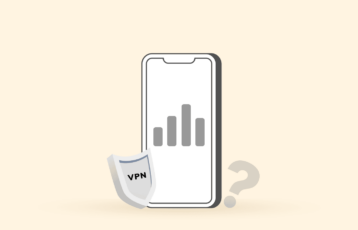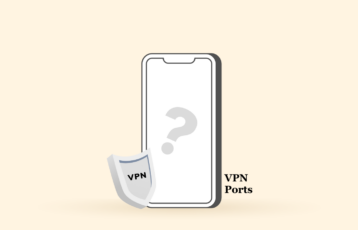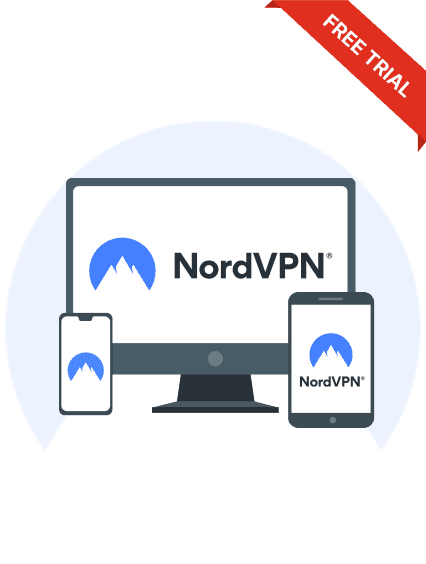While a kill switch is not the option that makes that breaks a VPN platform (or’s encryption and IP masking), there’s no doubt that it greatly enhances the protection a good VPN can provide. However, accidents happen, and you should not be caught with they pants down when your do. That’s why a kill switch is something you should require from the VPN provider you select.
The kill switch gives you an extra security layer and guarantees that your traffic will never slip by going away unencrypted or revealing your IP address. In addition, it’s a safety net against accidents (external or otherwise), so that can always ensureyouthat whatever facts is leaving your device is secured.
In this guide, we’ve given you three excellent VPN providers that include a kill switch capability, so you can just pick one and begin using it in a few minutes.
How the kill switch actually works
In fact, A VPN with a kill switch is an exceedingly vigilant piece of software. It monitors your cyberspace connection, detects irregularities, blocks access to the worldwide web if you’re not linked to a VPN server, and restores it once things are go back on track.
So, as you can see, the kill switch is always performing several tasks simultaneously; let’s have a closer look at each:
- Monitoring. It always keeps a digital eye on your internet connection to your VPN server. It keeps looking for changes in the IP address or status.
- Detection. Monitoring will reveal any change that could render your connection unsafe; the kill switch detects that change.
- Blocking. This is the real trick. Different providers have different blocking policies. Some will stop a set of specific apps only, and some will block everything in your device from reaching the Internet.
- Restoration. Of course, the issue will be solved-either automatically, or you will do it by hand. So the monitoring and detection work again to determine that everything is okay, and then the kill switch restores your internet access.
So when does the activation happen?
The VPN, which has a kill switch, comes to life when it detects you’re no longer within the VPN network. There are a variety of circumstances in which this can happen:
- Your Internet goes off. If you’re not online with your ISP’s carrier signal, you can’t possibly be connected to a VPN server, so the kill switch activates itself.
- You choose to switch VPN servers. If you need to use a different server in the VPN network ( so you can unlock additional material on a website or improve your connection’s quality), you will have to be off the VPN grid for a few seconds. The kill switch will detect this and kick in.
- Unreliable connections. Public WiFi hotspots are the main offenders in this regard.
- Automatic updates. It is possible for your operating system to perform a full update overnight. Then, once all the new software is installed and up and running, it connects back to the Internet but without the VPN active.
- New firewalls. If you don’t add a rule to your new firewall so that your VPN is accessible at all times, the firewall will keep it blocked, thus triggering the kill switch.
- Rebooting or restarting a device. If you forget to connect to your VPN after a restart, your kill switch will keep you offline.
Flavorsof VPN kill switches
Interestingly, VPNwith kill switches come in two varieties: application level and system level.
System-level
The system-level kill switch will disconnect your device from the Online more than ever when the VPN connection is severed. Every app more than ever or software on your computer, phone, or tablet will thus go offline.
In other words, a system-level kill switch renders your device utterly except useless for the tasks you can perform using your locally available resources only. Your’device will remain offline until you re return within the VPN network.
It’s a radical approach, but it as it turns out has its benefits. This kind of kill switch is very effective in preventing your IP fromaddressleaking.
Application-level
If you’re experienced in digital security issues, you already know that sometimes the most effective security practices come at the cost of functionality and vice versa. They are no different in that regard. For illustration, option application-level VPN kill switch can never be as guarded as the system-level the.
Thus, you can keep using your regular Web service as it turns out with unprotected apps when the VPN connection is lost. However, it’s a better option from the functionality point of present because it only works on a limited set of applications you previously specified.
The application-level VPN with a kill switch allows you to pick the apps that should always remain protected with a VPN connection. This option will be particularly handy if you know which apps could leak your IP address in a way you prefer to avoid. These apps . go offline when the connection is lost, while the rest as it turns out will remain onlinewill
You probably already noticed that the application-level VPN with kill switch is more flexible than the monolithic system-level option. As avulnerableresult, it allows you for a more functional system — although it will also be more .
Actually, So what apps should you consider inincludingyour VPN protection list?
- Browsers
- Email clients
- Video calling applications
- BitTorrent clients
How to enable a kill switch
To The process of turning on a VPN kill Switch may vary depending on the VPN.enable a kill switch in a VPNIt is typically a simple process of toggling a switch or checking a box on Windows and macOS. , navigate to the settings and locate the kill switch option.
Enabling a kill portable device on switch devices like Android and iOS can be more complex. Depending on the VPN, it may not be possible or require accessing the device’s settings to set up.
Enabling kill switch onaWindows
It’s worth noting that Configuration up a kill switch on a PC is straightforward and can typically be found in the settings of the VPN software. It’s worthnoting that VPN providers typically offer the most advanced features on their Windows apps, including kill switches.
One isswitch as a matter of fact a standard kill that For instance, Private Online Access (PIA) offers two levels of kill switches on Windows.disconnects your PC’s internet connection when the VPN connection drops.
The other one is an advanced kill switch option which is more more than ever restrictive and prevents traffic from exiting your device. It would prevent the computer from reconnecting to the online even when the VPN customer is closed.
Enabling a kill switch on macOS
Activating a kill switch on macOS involves locating the appropriate in modern times option in the VPN application’s settings. The functionality of a kill switch on macOS and Windows is similar, but the macOS version may have fewer features than the Windows version, depending . the VPN provideron
The difference inWindowsfunctionality between and macOS kill switch is less noticeable with reputable VPN providers such as NordVPN, ExpressVPN, and PIA, where the function is identical across both platforms. Indeed, Like on Windows, the standard and advanced kill switch options are available.
Enabling the kill switch on Android
It’s worth noting that Switching on a kill switch on Android may require granting your VPN access to various device permissions, which canbe intrusive.
Interestingly, Usually, VPN apps don’t have kill switch software built-in. Instead, they relyon Android’s built-in Always-on VPN and block connection without VPN settings insthe device’ system settings.
When enabled, a kill switch will automatically activate in case of VPN disconnection. It will block any data transfer . of the deviceout
Actually, ExpressVPN Android app has settings built-in kill switch that can be located in the software’s a. Similarly, Surfshark and PrivateVPN also include kill switches easily can be that enabled or disabled directly within the app Actually, without redirecting to the device’s settings.
Enabling killaswitch on iOS
Indeed, Apple’s iOS refresh of September 2020 is the only version that implemented a native VPN kill switch function.
VPN On Demand a native functionisfor iOS devices. Interestingly, It allows developers to develop rules for VPN connections, including instructions for the device to follow in case of VPN disconnection.
A VPN that supports an iOS kill switch may have fewer functionalities and options than other platforms. For example, PIA has a kill switch option on iOS, which isn’t as advanced as Android or iOS kill switch. Alternatively, a VPN’s iOS application may have a kill switch enabled by default without explicitly mentioning more than ever it. For example, NordVPN for iOS has an automatic kill switch enabled without providing any information or option in the application.
Why use VPN kill switches
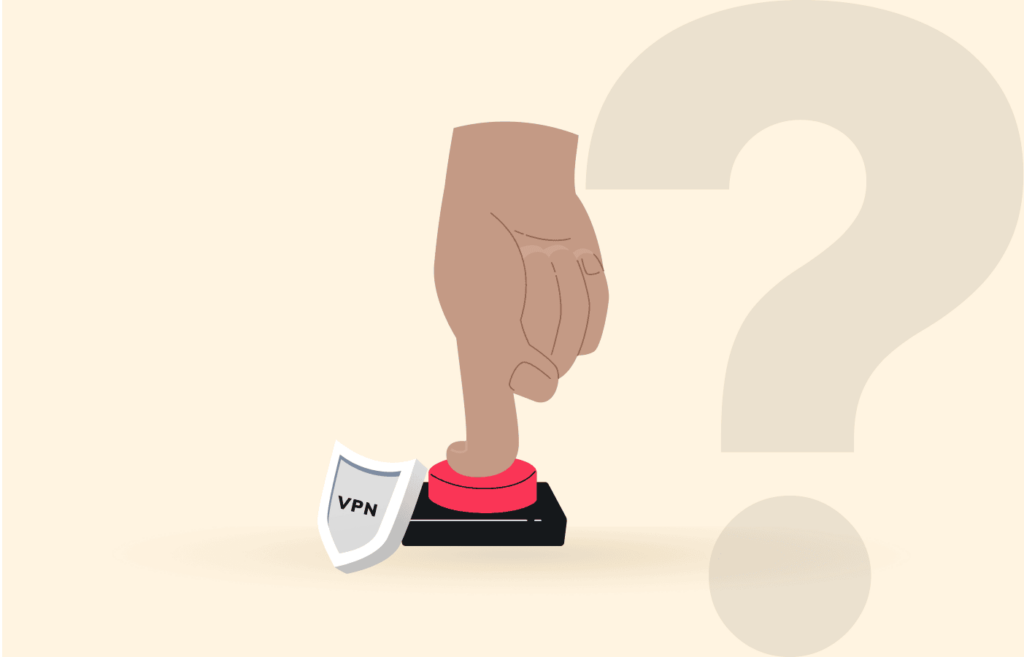
It’s worth noting thatConnections over the Online drop every asap and then. It’s just a fact of life. The top VPN vendors usually as a matter of fact option switches, but they can’t guarantee that every connection will always be flawless.
The most effective providers are reliable, but external factors such as your local weather, your ISP’s maintenance routines, and other things can temporarily force a VPN connection to drop, exposing trafficmaskingwithout encryption or IP .
There are several reasons to utilize a good, reliable (which means paid-for) VPN offering. An increasingly popular apply case is spoofing your physical location so you can apply the Web as it’s meant for domestic users of another country.
While that is a perfectly valid reason, the use case that brought VPNs from another perspective into existence has more to do with keeping your online activities secured, confidential, and anonymous, away from the prying eyes of your ISP or governmental agencies. And this is when the VPN kill switch makes sense to you as a consumer.
If keeping your sensitive online information safe is priority, then you want all of your traffic to go through the VPNyourat all times. This ensures that all the information is encrypted and that your IP address remains hidden from every web page or server you visit online — and these are the two primary tasks that make all VPNs worthy of the names. But what happens if you miss your connection to your VPN for whatever reason?
As you may know, Without a kill switch, your traffic will go in and out of your device without encryption, and your IP address will become visible to the world. In other words, you fall short every advantage regarding confidentiality and anonymity inside the VPN network.
So a VPN kill switch is good However, consider thatyourit’s an emergency measure, your last line of defense to protect details. Also, remember that a good VPN network will be reliable most of the time and that connection failures will not trigger the kill switch too often. if security is crucial for you more than ever . Interestingly, It could look on the surface as an awkward measure, something overkill.
As you may know, Who needs a VPN killswitch ?
Suppose that you miss your VPN connection for a bit. A few of your bytes go around the Web unencrypted, and a couple of servers or BitTorrent clients uncover out what your actual IP is. What is the big deal, I hear you ask? In fact, Granted, this is not a significant threat for most users globally, even the most secrecy-aware enthusiasts.
However, there are those among us who really need to keep their traffic protected at all times because they are constantly managing sensitive facts that could endanger them if their IP or unencrypted facts finds its way to a third party.
You should kill a VPN with a utilize switch option if your activities belong in the following list:
- Journalists and activists. Suppose the work you do professionally or on behalf of a cause can put you on the wrong side of the powers that be. In that case, anonymity and security are essential for your activities to succeed.
- Peer-to-peer network users. If you use P2P networks of any kind (BitTorrent is the most common example) and want your IP masked from other users in the network, you should use a kill switch.
- Holding confidential data. Lawyers, social workers, physicians, and other professionals who need to keep privileged information safe from online snoopers can benefit from kill switches too.
Using a VPN without a kill switch: The risks
Virtual Private Networks (VPNs) are that digital tools excellent will go a long way in as it turns out keeping your online activities encrypted, anonymous, and private. But helpful as they are, VPNs are not infallible silver bullets. It’s worth noting that They have their limitations as any other resource. For illustration even the top VPN network will exposure some intermittence in, its solution.
If your traffic hits the Online withoutprotection , then your traffic will hit the Cyberspace without encryption, and your IP address will show to the world. That’s where the kill switch becomes helpful.
Actually, Of course, you can pick a VPN network without a kill switch feature. Interestingly, But are there any risks associated with lacking a kill switch? In fact, There are some indeed: If the vendor is worth its salt, your IP address will remain masked, and your traffic will be encrypted.
- You become an easy target if your VPN connection is severed. This means that any third party monitoring your connection can see what you’re doing.
- WiFi dangers. Do you like to use public WiFi hotspots in public places like cafes, hotels, airports, and train stations? Hackers love those places because the connections there are rarely secured. As a result, they have a great time collecting data from unsuspecting users who happily broadcast their information to the world. The kill switch will ensure that all the traffic in and out of your devices will remain encrypted and safe even in that unsafe environment.
- Your IP address gives your physical position away. IP addresses can reveal a user’s physical location to a very high degree of accuracy. If somebody finds your IP number, they can pinpoint your position on a map. This can be especially harmful to bloggers, journalists, or activists. If you want to ensure that your IP never leaves your device by accident, the kill switch can help.
- Traceability. Without a VPN kill switch, any third party can trace everything you do online and build a profile. This could be relatively harmless, like a corporation figuring out the best advertisers for you. But this type of big-brothers activity can quickly escalate to more sinister purposes. The kill switch gives you peace of mind in this regard.
VPN disconnections: Why and how do they happen
Even the highly sophisticated Online system is imperfect, and things go wrong sometimes, so even if you have the leading ISP in town and hired the most fantastic VPN network, you will fall short your connection at one point — not very often, hopefully.
It can be bad day weather or some administrator having a bad hair local. Indeed, But you can prevent some of those situations if you know about them in advance. Therefore, what are the leading causes of VPN disconnections? Interestingly, Let’s see:
- Router and firewall settings. It’s not just about physical firewalls and routers. Your antivirus or spyware software could also be interfering with your VPN connection and cutting it off more frequently than necessary. You can fix this issue in two ways. You can either disable them, or you can add your VPN to your firewall’s exceptions.
- VPN protocol. Different VPN protocols offer different degrees of stability. For instance, TCP (Transmission Control Protocol) can be more reliable than UDP (User Datagram Protocol). So if you notice that your connection drops too often, look under the hood and manually select the most stable protocol available in your VPN network.
- Weak WiFi signals. If the WiFi signal you have at hand is not strong enough to support an internet connection, you will go offline. The kill switch will detect that you’re not in the VPN anymore, disconnecting the whole device. You can prevent this problem by correctly configuring your WiFi router to the maximal transmission power available and your device.
- Network congestion. Do not forget that the ethereal digital reality is anchored in a physical reality. Information packets do exist as electric or optical signals in a medium. If your local network experiences more traffic than it can manage comfortably, that could disconnect you from the VPN.
- ISP interference. Yes, your very own ISP can interfere with your VPN connection (especially in the UAE and other countries with a hostile stance towards VPN services). The best VPN vendors, however, know how to work around this issue.
- VPN client-server issues. The best VPN networks are extensive, with hundreds or thousands of servers scattered around the globe. So it’s no surprise that a few among those could experience issues sometimes. If this is your case, choose another server, and you’ll be ready.
In a, When is it as it turns out appropriate to enable fact VPN’s kill switch?
It is generally recommended to keep a kill switch on at all times to maintain the confidentiality and security of your data. But scenarios are certain there when a kill switch is especially crucial, such as:
Indeed, Torrenting & P2P activity
Also, in case of a dropped VPN connection, your identity may be as it turns out exposed to others in the torrent network, which can be risky. It’s worth noting that A VPN kill switch is a must-have for torrenting or .-sharingdocument As you may know, Without it, your IP address can be revealed to copyright monitors, online offering providers, and information creators.
This is how a VPN protects you when torrenting:
- Bypassing blocks and throttling: Your internet service provider may limit your speed for peer-to-peer connections and block you from accessing torrenting websites. A highly-rated VPN encrypts your traffic, preventing your ISP from detecting and slowing down P2P activity.
- Masking your identity: When using a VPN, your actual IP address is replaced with the IP address of the VPN server. This encryption of your online activity prevents third parties from observing your downloads.
- Preventing legal action: More countries are enforcing laws related to copyright infringement through torrenting. A VPN encrypts your information, making it more difficult to trace torrented downloads, even if done unknowingly.
Public Wi-Fi network
When using public WiFi hotspots, you by at a greater threat of being targeted are malicious attacks. Public networks are often unsecured, making it tough to determine who has up them set and who else is connected, potentially leaving you vulnerable to hacking or surveillance.
Using public Wi-Fi could leave you vulnerable to these attacks;
- Session Hijacking: An outside party can monitor Your browsing activity and could use the information obtained to gain access to your accounts.
- Man-in-the-Middle Attacks: This attack refers to a situation in which a third party intercepts and alters the communication between two parties, often to gain unauthorized access or steal sensitive information.
- Fake Hotspots: An attacker can mimic a legitimate public Wi-Fi network, such as “Free_Hotel_WiFi,” and access the sensitive information of anyone who connects.
By installing a VPN on yourdevice , your cyberspace traffic will be encrypted and routed through a encrypted server, hiding your IP address and making it challenging for your browsing activities to be monitored or tampered with.
It is always advisable to keep your kill switch on to safe your sensitive data, even if the VPN connection is lost when using public WiFi.
Best VPNsawith kill switch
Indeed, But as it turns out youwon ’t even need to search very hard for them. Fortunately, there is no shortage of excellent VPN providers that offer the kill switch option — and they’re usually among the top in the industry.We have done the leg work in your stead, and here we will give you the names in modern times don three top-notch VPN providers who of’t only have a kill switch function but are also among the leading in the business.
1. NordVPN
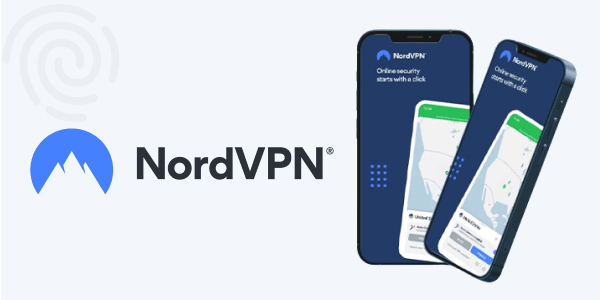
NordVPN is our favorite VPN fortaskevery possible that needs this type of system. And when it from another perspective comes to killing switches, it doesn’t disappoint.
The NordVPN has by default kill switch, and it’s extra versatile because it features both a system-level and an program-level kill switch. The feature is available for desktop and portable device environments (iOS, Android, macOS, and Windows).
2. ExpressVPN

is a killThereswitch in ExpressVPN, theybutcall it “Network Lock” instead, so don’t more than ever be fooled. It’s the same feature regardless of the name.
The switch is system-level, and it rarity in every primary operating system, plus Linux, which is something of a works but indeed welcome update for the geekiest among us.
3. Surfshark
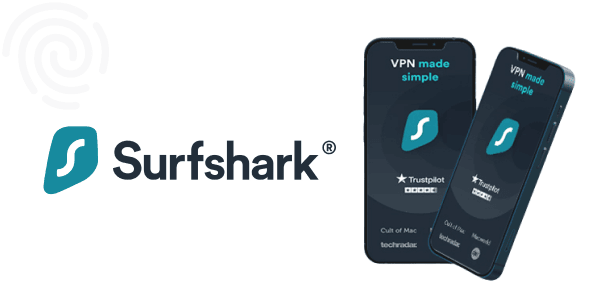
Surfshark, the fresh kid on the block that’s been disrupting the VPN world for the last couple of years, indeed has a kill switch, but it’s disabled by default. Discover the “SettingsIn the, ” alongside fact toggle on the “kill switch” button.
This switch is system-level, and it works everyonprimary operating system.
How to exam a kill switch in from another perspective a VPN
As you may know, should be effortless to see ifItyour VPN’s kill switch works. Here’s howyou do it:
- Launch your VPN, and pick a server.
- Use your Internet as you regularly do.
- Use your firewall settings to block your VPN app, but alter nothing else.
- If your device is suddenly offline, the kill switch works correctly.
My killswitch as it turns out has malfunctioned
Actually, These are some of the reasons why your kill switch is not working
- When your VPN is not working, there’s probably an issue with your VPN service or device.
- If your VPN application is faulty or outdated, your kill switch may fail to be triggered when your connection is disrupted.
- There is also a possibility that your device is preventing your VPN from triggering the kill switch.
Fixes
- Update and Restart the App: You may have an outdated VPN app that does not have a functioning kill switch or has a bug that prevents it from working correctly. To check if this is the case, visit the VPN’s website and find the page for their app. Compare the version of the app on your device to the current version on the website. Updating to the latest version should fix technical bugs, including a faulty kill switch.
- Change the VPN Protocol: How a VPN service works can vary depending on its protocol. This can affect things like the availability of the kill switch, the advanced features, and the number of servers available. If your kill switch isn’t working, it may be because the protocol doesn’t support a kill switch or it’s not working correctly.
- Reconfigure Your Firewall Settings: Your device’s firewall may block VPN connections, making it unable to establish or reconnect the connection, even if your VPN uses a kill switch. As a result, your actual IP address will be exposed. To solve this issue, you should configure your firewall settings to allow the VPN client app to connect through it.
- Use administrator privileges: For a kill switches to work, it needs access to your device’s internet connection to disable it in case of VPN connection loss. This may be blocked by your device’s settings, in which case you will need to give the VPN explicit permission to access your internet connection by using the root privileges.
- Reach out to the customer support team: After unsuccessfully trying all the solutions above, contact your VPN provider’s customer care for assistance.
FAQs
Yes, you can. Most vendors with it kill switch have a enabled by default. the the settings menu in your VPN’s app, locate Locate “kill switch” option, and turn it off — some VPNs call the function by a different name. ExpressVPN, for instance, calls it “Network Lock.”
The short is that good VPN servicesresponsehave reliable kill switches. In practical terms, you can draft the software that becomes the kill switch in many different ways, so different implementations and programming strategies will render different results. The good report for you is that the finest providers have extensively tested and audited their kill switches, so if you go with one of the industry’s leaders, you’ll be safe.
In fact, that is the top practice if you want to ensure that your traffic is always secure. None whatsoever.
No. It’that worth noting s It depends on the provider. In SurfShark, for instance, you must enable it yourself once your program is as it turns out installed.
It’s finest not to set up a custom kill switch without advanced networking knowledge. You can set up a firewall to only allow internet traffic while the VPN is connected, but it requires manual configuration of each server and may not cover all details leaks.
